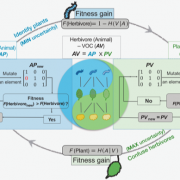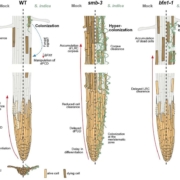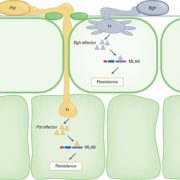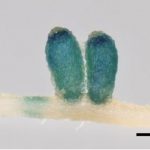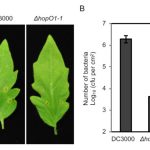Resistant tomato restricts colonization and invasion by the pathogen Ralstonia solanacearum at four organismal levels (J Exp Bot)
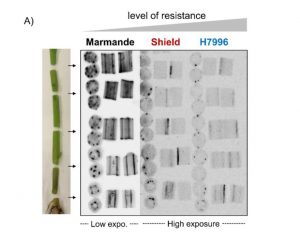 Ralstonia solanacearum is a pathogenic bacterium that infects many important crop species, including tomato. Following invasion into the roots, the bacteria move upwards into the shoot and cause dramatic wilting. Previous studies have identified moderately and highly resistant lines. Here, Planas-Marquès et al. used luminescent bacteria and a grafting method to investigate how the genetic resistance controls pathogen entry and spread. They found that multiple locations are crucial for these processes, including the junction of root and shoot, verticle movement within the xylem, circular spread between vessels and radial spread from the vessels into shoot tissues. Successful pathogens must surmount each of these barriers. The authors discuss how resistant plants block this progression, for example through obstruction of xylem vessels by gums and tyloses.(Summary by Mary Williams) J. Exp. Bot. 10.1093/jxb/erz562
Ralstonia solanacearum is a pathogenic bacterium that infects many important crop species, including tomato. Following invasion into the roots, the bacteria move upwards into the shoot and cause dramatic wilting. Previous studies have identified moderately and highly resistant lines. Here, Planas-Marquès et al. used luminescent bacteria and a grafting method to investigate how the genetic resistance controls pathogen entry and spread. They found that multiple locations are crucial for these processes, including the junction of root and shoot, verticle movement within the xylem, circular spread between vessels and radial spread from the vessels into shoot tissues. Successful pathogens must surmount each of these barriers. The authors discuss how resistant plants block this progression, for example through obstruction of xylem vessels by gums and tyloses.(Summary by Mary Williams) J. Exp. Bot. 10.1093/jxb/erz562


